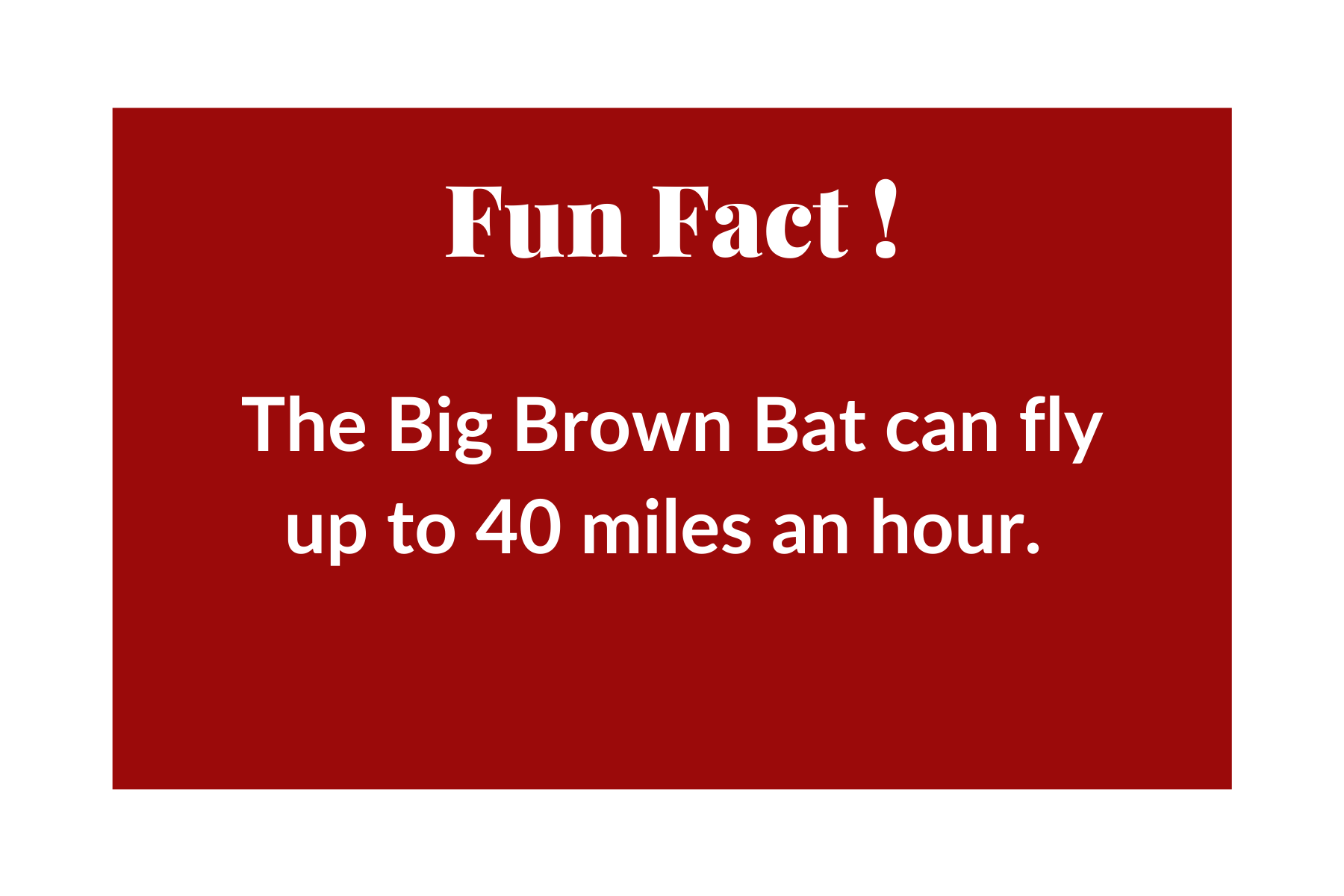Big Brown Bat
Big Brown Bat / Ann Froschauer
Scientific Name: Eptesicus fucus
Range: Caribbean, North America, Central America and South America
Habitat: Tree Hollows, Caves, Buildings
Litter Size: 1-2 pups
Description
The Big Brown Bat is a large bat native to Jamaica with brown or copper coloured fur and a black tail, black wing membranes, small black rounded ears and a broad nose. Lighter colour fur is located on its belly.
Adult Big Brown Bats have a total body length of 110 - 130 mm, an average wingspan of 330 mm and a tail length 38 - 50 mm. Female individuals are generally larger than males.
In the Wild, the Big Brown Bat can live up to 20 years.
Range
The Big Brown Bat can be found across the Caribbean, the extreme northern regions of North America to Central America and northern South America.
Habitat
The bat roosts in caves, hollow trees, forests, parks, gardens and buildings.
Diet
The diet of the Big Brown Bat mostly consist of beetles but also includes other flying insects such as moths, flies, dragonflies and stink bugs.
Big Brown Bats forages in open and semi-open areas and uses echolocation to locate their prey during flight. Mature females can consume their body mass in insects in one night.
Breeding
During the breeding season, mature females form maternity colonies ranging from five to upwards of 700 individuals. Maternity colonies often roosts in hollow trees. During this time male Big Brown Bats roost alone or in small groups elsewhere.
Female Big Brown Bats produce one litter every year with either 1 or 2 pups. These young pups are born blind and naked but soon open their eyes and grow fur shortly seven days after being born. Three to four weeks after being born, young pups learn to fly and accompany their mothers while foraging for two to three weeks .Young pups that cannot fly are left in the roost with the others.
Once all young pups are independent, the maternity colony will break up and form smaller colonies with both males and females in different areas.
Conservation Status
Like most wildlife, habitat degradation is a major threat to the Big Brown Bat. However, Big Brown Bats adapt well to different environments and can be found in urban areas.
Predators of the Big Brown Bat include snakes, owls and even cats. Young pups are extremely vulnerable to capture by these predators.

